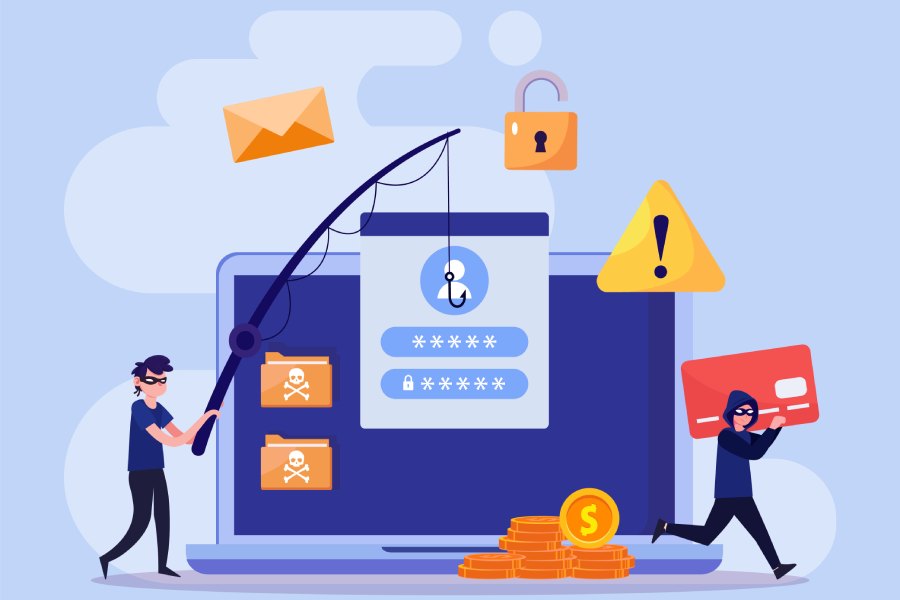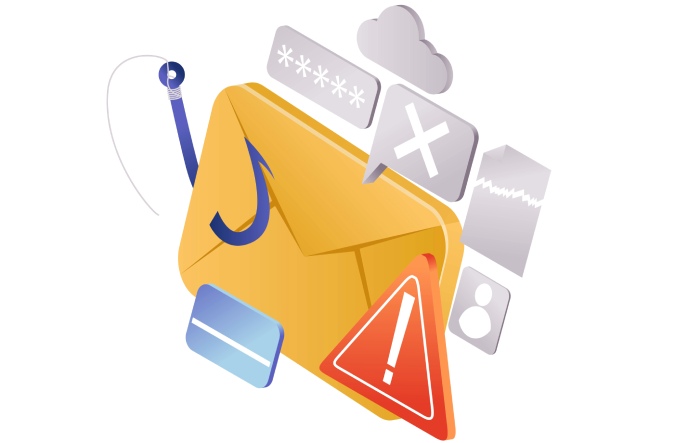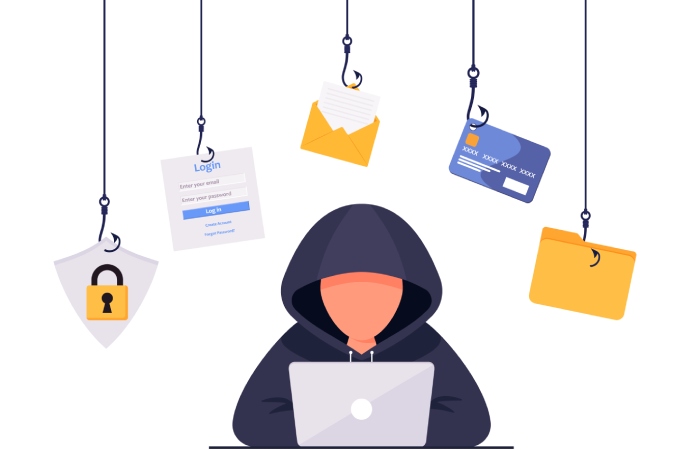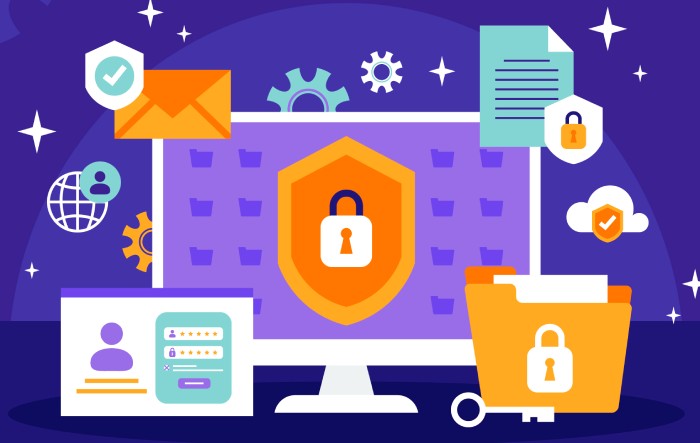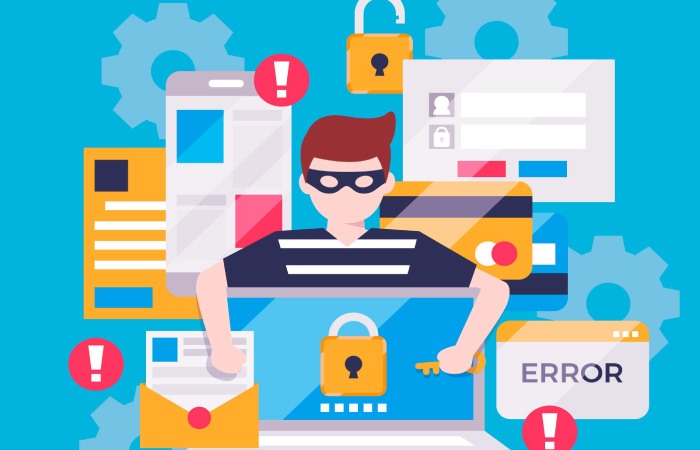As cyber threats evolve, phishing attacks continue to be one of the most pervasive and damaging types of cybercrime targeting businesses worldwide. Phishing detection and phishing prevention have become critical components of any comprehensive cybersecurity strategy in 2025. With the increasing sophistication of spear phishing and email fraud, organizations require advanced, integrated cybersecurity solutions that offer robust email security, social engineering protection, and real-time threat detection.
Anti-phishing tools are now indispensable, not only to flag and filter out spam and phishing emails but also to provide phishing email analysis, credential theft protection, and incident response capabilities. Coupled with machine learning in cybersecurity, these solutions employ behavioral analysis and threat intelligence to identify zero-day attack vectors and malicious link detection before they can compromise networks or sensitive data.
Leading cybersecurity providers such as Proofpoint, Microsoft Defender for Office 365, and Cofense (formerly PhishMe) have pioneered technologies that combine secure email gateways with anti-malware software, anti-spam software, reverse email lookup software, and phishing simulation to build organizational resilience through phishing awareness programs and security awareness training.
In this article, we examine key features to look for in effective anti-phishing solutions and highlight the first four top-tier solutions businesses should consider integrating by 2025.
Key Features to Look for in an Effective Anti-Phishing Solution
When selecting an anti-phishing solution to defend your business, it is crucial to evaluate comprehensive capabilities that go beyond basic spam filtering:
- Phishing Detection and Prevention: Look for solutions leveraging machine learning and behavioral analysis to spot phishing URLs, malicious link detection, and spear phishing defense in real-time. Integration with anti-phishing APIs and phishing blacklist databases enhances proactive phishing attack mitigation.
- Email Security and Secure Email Gateway: Effective secure email gateways should incorporate email encryption, email fraud protection, and anti-malware software to defend against embedded threats and zero-day exploit delivery.
- Multi-Factor Authentication (MFA): Solutions supporting two-factor authentication or more advanced multi-factor authentication protocols provide crucial credential theft protection and identity protection by requiring multiple proof points during access.
- Security Awareness Training and Phishing Simulation: Regular phishing simulation exercises paired with security awareness training are pivotal in mounting social engineering protection by empowering employees to recognize phishing attempts and ransomware vectors.
- Threat Intelligence and Incident Response: Integration with security information and event management (SIEM) platforms and cyber threat hunting tools facilitates automated incident response workflows, reducing dwell time and data loss prevention risks.
- Endpoint and Network Security: Anti-phishing tools should complement endpoint protection solutions, browser security enhancements, and network security controls to afford layered security across digital assets.
- Cloud Security and Web Filtering: With the rise of cloud computing, solutions that offer cloud security features and URL filtering or web filtering capabilities help extend corporate defenses into users’ cloud and web activities.
Combining these capabilities helps enterprises form a resilient defense posture against the dynamic global phishing threat landscape.
Solution 1: Advanced Email Filtering and Threat Detection Tools
Leading vendors such as Barracuda Networks, Mimecast, and Symantec (Broadcom) specialize in multifaceted email security solutions centered on advanced email filtering and threat detection. These platforms provide robust, secure email gateways equipped with intelligent spam filtering, malicious link detection, and email encryption to combat phishing and maintain email fraud protection.
- Spam Filtering & Anti-Spam Software: Using sophisticated heuristic and reputation-based approaches, these solutions automatically block known phishing blacklists and leverage real-time threat intelligence from global feeds.
- Threat Detection & Incident Response: Deep phishing email analysis powered by AI enables detection of zero-day attacks and malicious payloads. Integration with SIEM and security orchestration, automation, and response (SOAR) systems streamlines cyber threat hunting and incident response.
- Data Loss Prevention (DLP): Embedded DLP features safeguard sensitive corporate information from being exfiltrated by phishing scams designed to trick employees into leaking data.
- Behavioral Analysis & Machine Learning: Advanced behavioral analytics enhance detection accuracy, reducing false positives and accelerating phishing attack mitigation.
Microsoft Defender for Office 365 embodies many of these capabilities with a seamless native integration for Microsoft-centric environments, leveraging Microsoft’s extensive threat intelligence networks to deliver reputation filtering and phishing simulation tools.
Solution 2: AI-Powered Phishing Detection Platforms
The next frontier in phishing prevention centers on AI and machine learning frameworks capable of real-time threat detection and behavioral phishing email analysis. Vendors such as Darktrace, Cofense, and Forcepoint provide AI-driven platforms that use behavioral analysis to identify abnormal email patterns, malicious URLs, and social engineering attempts indicative of phishing campaigns.
- Machine Learning in Cybersecurity: Advanced algorithms continuously learn from emerging attack vectors and threat intelligence to improve phishing detection.
- Phishing Simulation and Phishing Awareness Programs: Platforms integrate phishing report services and simulate real-world phishing attacks, reinforcing user vigilance and security awareness training.
- Spear Phishing Defense & Fraud Detection: These platforms shine at identifying highly targeted spear phishing attempts by leveraging contextual behavioral cues and digital identity verification.
- Anti-Phishing APIs: Modern APIs allow seamless integration with existing security architectures, enhancing phishing attack mitigation with additional layers of detection.
Trend Micro also offers AI-enhanced email security products that combine endpoint protection and cloud security to deliver holistic phishing prevention and ransomware protection capabilities.
Solution 3: Multi-Factor Authentication (MFA) Integration
Credential theft remains a primary enabler of successful phishing attacks. Implementing multi-factor authentication, particularly adaptive MFA, is among the most effective strategies for phishing prevention and identity protection.
- Two-Factor and Multi-Factor Authentication: Products from Okta and Google’s Advanced Protection Program exemplify secure authentication platforms that reduce account takeover risks by requiring additional identity verification steps beyond passwords.
- Credential Theft Protection: MFA dramatically limits credential reuse in phishing-based campaigns, safeguarding network security and critical data repositories.
- Integration with Anti-Phishing Solutions: Many anti-phishing tools now offer customizable MFA plugins or API support, enabling unified login security alongside secure email gateway systems.
- Digital Identity Verification: Advanced MFA often incorporates biometric verification or hardware tokens to strengthen fraud detection and phishing attack mitigation.
Deploying MFA in tandem with endpoint protection and browser security best practices creates a strong barrier against phishing-driven identity compromise.
Solution 4: Security Awareness Training and Simulation Software
No technology-based defense is foolproof without an educated workforce. Security awareness training paired with phishing simulation software is essential for combating social engineering protection challenges.
- Phishing Simulation: Platforms from KnowBe4 and Cofense enable organizations to run customizable phishing drills that test employee responsiveness and understanding of phishing tactics.
- Phishing Awareness Programs: These programs help build a cybersecurity-conscious culture by providing engaging content tailored to different roles within the organization.
- Incident Response and Phishing Report Services: Employees trained to recognize phishing can report suspicious emails promptly, enabling faster incident response and reducing dwell times.
- Integration with SIEM and Threat Intelligence: Feedback from phishing simulations and reporting is invaluable for updating security policies and refining threat intelligence.
FireEye (now Trellix) combines extensive threat expertise with training tools to provide tailored learning paths that address new attack methodologies, including ransomware protection and advanced persistent threat phishing.
High-quality security awareness training platforms complement technical defenses and have become a keystone in protecting enterprises from costly phishing incidents in 2025.
Solution 5: Browser-Based Anti-Phishing Extensions and Plugins
Browser-based anti-phishing extensions and plugins serve as the first line of defense against phishing attacks at the user interface level by integrating directly with popular web browsers. These tools leverage real-time phishing detection through URL filtering, malicious link detection, and behavioral analysis to prevent users from accessing fraudulent websites. Solutions from vendors like Avast and Bitdefender frequently incorporate machine learning in cybersecurity to identify zero-day attack attempts and spear phishing domains, providing dynamic phishing attack mitigation.
Incorporating such browser security tools aligns well with endpoint protection strategies, complementing existing email security and network security measures. Anti-phishing APIs embedded in these extensions can update phishing blacklists continuously, protecting users from evolving threats. Additionally, by integrating with corporate phishing awareness programs, these plugins reinforce security awareness training, enabling users to better recognize social engineering protection cues directly in their browsing experience.
Solution 6: Network-Level Phishing Protection Systems
Network-level phishing protection is foundational for comprehensive cybersecurity solutions, focusing on thwarting phishing attempts before they reach users’ devices. Utilizing URL filtering, spam filtering, and web filtering technologies, vendors including Cisco, FireEye (now Trellix), and Forcepoint offer robust network security appliances and platforms that analyze inbound and outbound traffic for signs of phishing email patterns, phishing email analysis, and email fraud protection.
These systems often work in tandem with security information and event management (SIEM) tools for cyber threat hunting and incident response. By incorporating threat intelligence feeds and phishing blacklists, network-level solutions can dynamically block phishing domains and suspicious IP addresses in real-time, effectively enabling phishing prevention across all connected devices within an organization’s infrastructure. Integration with data loss prevention frameworks further enhances credential theft protection and identity protection at the network boundary.
Solution 7: Cloud-Based Anti-Phishing Services for SMBs
Small and medium-sized businesses (SMBs) are increasingly targeted by phishing attacks due to often limited resources for extensive cybersecurity solutions. Cloud-based anti-phishing services provide an accessible and scalable option for these organizations. Providers such as Mimecast, Proofpoint, and Microsoft Defender for Office 365 offer secure email gateway solutions combined with anti-spam software, email encryption, and phishing simulation capabilities tailored specifically for SMB environments.
Cloud security ensures continuous updates via anti-phishing APIs, allowing SMBs to benefit from real-time threat detection and zero-day attack prevention without on-premises infrastructure overhead. These platforms also offer phishing report services and spear phishing defense modules, assisting small teams in maintaining comprehensive phishing attack mitigation and email security. Integration with identity providers like Okta enhances multi-factor authentication enforcement, offering additional layers of authentication and fraud detection.
Solution 8: Incident Response and Phishing Reporting Tools
Effective phishing prevention extends beyond detection to include rapid incident response and user-driven phishing reporting mechanisms. Tools provided by Cofense (formerly PhishMe) stand out for their specialization in phishing incident response and phishing simulations that integrate into phishing awareness programs, empowering organizations to foster resilience against social engineering attacks.
Phishing reporting tools streamline the submission of suspicious emails, feeding data into security incident and event management systems for contextual phishing email analysis and cyber threat hunting. Solutions from Rapid7 and Darktrace offer automated incident response workflows that can isolate affected endpoints, apply behavioral analysis to phishing attack attempts, and deploy ransomware protection protocols. These incident response capabilities significantly reduce damage from credential theft and identity compromise.
Solution 9: Anti-Phishing Solutions with Real-Time URL Analysis
Real-time URL analysis is critical in thwarting phishing attempts that rely on malicious domains and URLs delivered via email or the web. Tools by Trend Micro and Symantec (Broadcom) employ machine learning algorithms to perform instant URL reputation checks and behavioral assessment before allowing user access, thus preventing drive-by downloads and zero-day exploits.
These anti-phishing tools integrate URL filtering with browser security, secure email gateways, and anti-malware software to block phishing websites, thereby improving phishing email analysis and fraud detection accuracy. The continuous update of threat intelligence databases, including phishing blacklists, ensures comprehensive protection against sophisticated phishing attack vectors.
Solution 10: Comprehensive Security Suites with Embedded Anti-Phishing Features
Integrated cybersecurity suites bring together multiple layers of defense to address phishing threats holistically. Companies like McAfee, Sophos, and Kaspersky offer broad-spectrum security packages that encompass email security, endpoint protection, network security, anti-spam software, data loss prevention, and phishing prevention, layered with multi-factor authentication and cryptographic email encryption.
These comprehensive platforms fuse anti-phishing tools with centralized management consoles, providing visibility through security information and event management, enabling cyber threat hunting and phishing attack mitigation on a large scale. The inclusion of phishing simulation, phishing awareness programs, and digital identity verification within such suites ensures that both technical and human factors are covered, creating resilient security postures against internet security risks.
Conclusion: Choosing the Right Anti-Phishing Solution for Your Business Needs in 2025
Selecting an appropriate anti-phishing solution in 2025 requires a nuanced understanding of organizational size, risk profile, existing cybersecurity infrastructure, and compliance obligations. Enterprises may benefit from multi-layered defenses combining network-level protection, cloud-based services, and incident response frameworks to ensure comprehensive phishing attack mitigation. For SMBs, cloud-based anti-phishing services integrating phishing report services and user-friendly phishing awareness programs offer accessible and effective protection.
Incorporating vendor solutions such as Proofpoint’s secure email gateway, KnowBe4’s security awareness training, or Microsoft Defender for Office 365’s advanced phishing prevention capabilities, tailored with multi-factor authentication and real-time threat detection leveraging machine learning, provides a strong defense against evolving phishing tactics. Ultimately, the synergy between technological advancements—like behavioral analysis, anti-phishing APIs, and phishing blacklist integration—and continuous human education through phishing simulation remains pivotal to preventing phishing attacks and securing digital identities across all industries.
Key Takeaways
- Multi-layered anti-phishing strategies combining browser security, network-level protection, and cloud-based services provide robust defense against evolving phishing threats.
- Real-time URL analysis and machine learning-driven behavioral analysis enhance malicious link detection and zero-day attack prevention.
- Integrated security suites embedding phishing prevention with endpoint protection, email security, and multi-factor authentication offer comprehensive cybersecurity coverage.
- Phishing awareness programs and simulation tools are essential to empower users with social engineering protection skills.
- Incident response and phishing report services streamline threat detection and mitigation, minimizing damage from credential theft and identity compromise.

